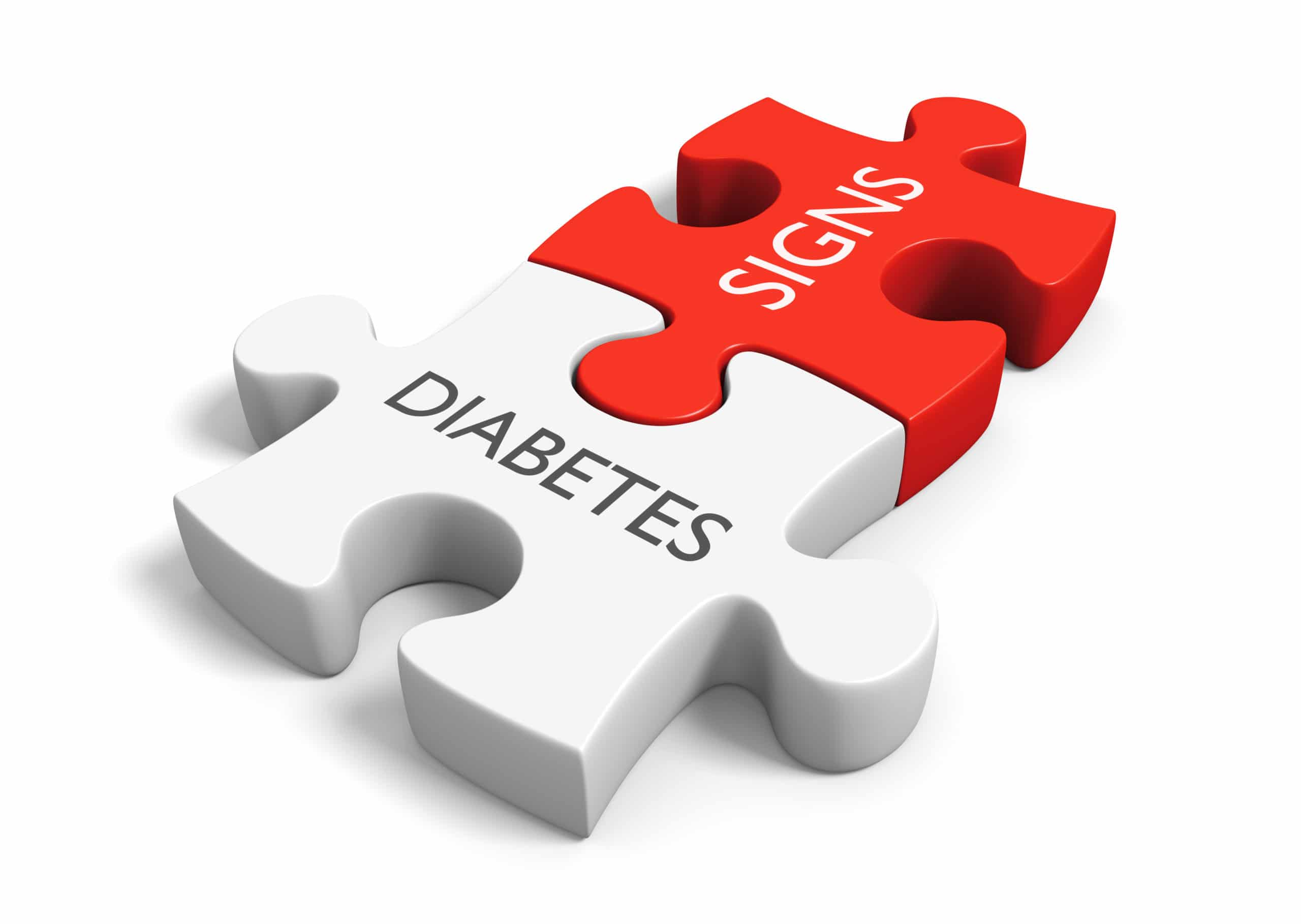Home » Health Education » Diabetes » What Are The Early Signs of Diabetes?

What Are The Early Signs of Diabetes?
According to the CDC, about 1 in 10 Americans have diabetes — roughly 34 million people. Of those, about 95% of them have type 2 diabetes, which is developed later in life and is mostly preventable. In this article, we’ll go through the major warning signs of prediabetes, the condition people develop before progressing to type 2 diabetes.
Don’t let this preventable disease catch you unaware
Prediabetes is defined as an elevated blood sugar level, but not high enough to qualify as a full case of type 2 diabetes. The good news is prediabetes is completely reversible with the right diet and lifestyle changes.
1. Blurred Vision
Your eyes are extremely sensitive to elevated blood sugar levels. Having too much sugar in your blood weakens the vessels in your eyes and can even damage your retinas. The vessels can bulge and even form mini-aneurysms inside the eye. During the early stages of diabetes, blurry vision can come and go. It isn’t until later that the damage can become permanent.
Blurry vision can be temporary, returning to normal in as little as a day. Because of this, many people are tempted to ignore the problem. However, it is important to go see a doctor immediately if you are experiencing blurred vision.
2. Increased hunger
When your body has too much sugar in it, the sugar can’t enter the cells that need it. In some cases, this is due to insulin resistance or a lack of insulin. Insulin is what transports glucose (or blood sugar) throughout your body. When the cells of your body don’t have the glucose they need to function, they send out a signal to your brain that makes you hungry. However, eating will only cause a further buildup of glucose if the blood sugar isn’t lowered first.
Diet plays the biggest role in this particular issue. Sweets and foods loaded with artificial sugar will do nothing to make you feel full while causing your blood sugar levels to skyrocket. If foods high in processed sugar are a major part of your diet, it can lead to a vicious cycle of eating constantly but never getting the nutrients your body needs while further elevating blood sugar.
3. Increased thirst
Increased thirst seems like it would have a similar cause to increased hunger, but it actually occurs for a very different reason. Your kidneys are responsible for processing glucose in your body. When there is too much glucose for your kidney to handle, the excess gets sent out through urine. , which makes you feel dehydrated.
In this case, feeling thirsty has nothing to do with how much water you are drinking, but how well your kidneys are able to process the amount of blood sugar in your system. If blood sugar levels don’t return to normal, no amount of water will make you feel hydrated for very long.
4. Tingling
Blood sugar levels also have an effect on the nervous system. This is most usually seen in the places farthest from the body — the hands and feet — because blood has to travel the farthest to get there. Too much blood sugar can cause them to not work as well, damage them, or cause them to go completely numb. Any tingling or numbness in the hands and feet should be looked at immediately.
5. Slow-healing wounds
This is also a result of having damaged nerves. If the body’s nerves are damaged because they aren’t getting enough blood, it reduces their ability for your body to begin to heal itself. Getting healthy, oxygenated blood to a damaged area is essential to the healing process.
In the worst cases, some diabetics experience neuropathy, which is when the nerves die. This is dangerous because people will completely lose feeling in a part of their body (usually the feet) and will be unaware if they get hurt. People with neuropathy can walk around for weeks with a wound without knowing it, making it progressively worse.
6. Fatigue
This can be a difficult one for many people because fatigue can be caused by many different things. You might attribute it to a lack of sleep or stress — both of which could be true. A number of other illnesses or factors can also cause fatigue.
However, if you are experiencing fatigue alongside any of these other symptoms, it should definitely be treated as another warning sign that you may be developing, or already have, prediabetes.
Want to know if you are at risk for diabetes?
At Life Line Screening, we offer a simple diabetes test (called an A1C panel) that can be done quickly and easily. With just a finger prick, we can measure the amount of glucose in your blood and tell you if you are at risk of being prediabetic or developing type 2 diabetes. We’ll also give you your results so you can share them with your doctor.
If you’re unsure or feel you may exhibit the risk factors, learn more about Life Line Screening’s A1C home test kits today, or schedule a screening and get informed about your health.
References
“Type 2 Diabetes.” Centers for Disease Control and Prevention, May 2019.
“Eye damage with diabetes.” Kaiser Permanente, 01/03/19.
“Diabetes symptoms: When diabetes symptoms are a concern.” Mayo Clinic, 05/25/19.
Learn more or schedule a screening today at lifelinescreening.com — or give us a call at 800.718.0961. We’d love to help.
Topics:
Diabetes